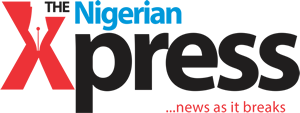The dollar held on to recent gains against its major peers on Tuesday supported by a recovery in investors’ risk appetite which gave an overnight boost to U.S. yields.
The Australian dollar rose, reversing earlier losses, after the Reserve Bank of Australia (RBA) held rates at record lows at its first meeting of the year but sounded less dovish than expected.
The dollar index, which measures the greenback against a basket of six key rivals, was barely changed at 95.846 after gaining for three straight sessions.
READ ALSO:Mourinho takes a tumble at Russian ice hockey game
“The overly pessimistic view on developed economies and the overly dovish view on the (Federal Reserve) is being unwound,” said Masafumi Yamamoto, chief currency strategist at Mizuho Securities.
Trading was likely to remain subdued in Asia with many markets across the region closed for Lunar New Year holidays for much of the week.
The index rose 0.7 per cent after dipping last week below its 200-day moving average for the first time since early January 2018.
It gained as Treasury yields rose with that of the 10-year jumping nine basis points over the past two sessions.
Yields have climbed after MSCI’s gauge of global stocks hit a two-month high on Monday as optimism over recently concluded U.S.-China trade talks helped send U.S. technology and industrial shares higher.
READ ALSO:Germany’s Merkel signals support for 2038 coal exit deadline
The Aussie was last up 0.4 per cent at $0.7255 about 50 minutes after the RBA’s decision.
It had traded in negative territory during most of the session after retail sales for December came in weaker than expected.
“The key message from the RBA seems clear – that they have noted the weaker global outlook, ongoing steep declines in Sydney and Melbourne house prices and concede that the third quarter GDP (gross domestic product) report was a fizzer,” said Sean Callow, Sydney-based senior currency strategist at Westpac.
Some market players are still expecting a rate cut later this year due to mounting signs of economic weakness.
“It will be hard for the Australian dollar to close above $0.7300 given the stubbornness of rates markets still pricing in considerable chance of RBA easing this year, premised on the RBA simply being too optimistic,” said Callow.
The euro was flat at $1.1438, off three-week high of $1.15145 set on Thursday.
Against the Japanese yen, the dollar rose a tad to 109.93 yen. It had risen above 110 yen for the first time since December 31 overnight.
“There’s further room to rise for the U.S. two-year yield. If this move continues, dollar and yen will rise above 110” again, said Mizuho’s Yamamoto.
Sterling was flat at $1.3038 after seesawing during the previous session on uncertainty over the way Britain will leave the European Union. (NAN)


